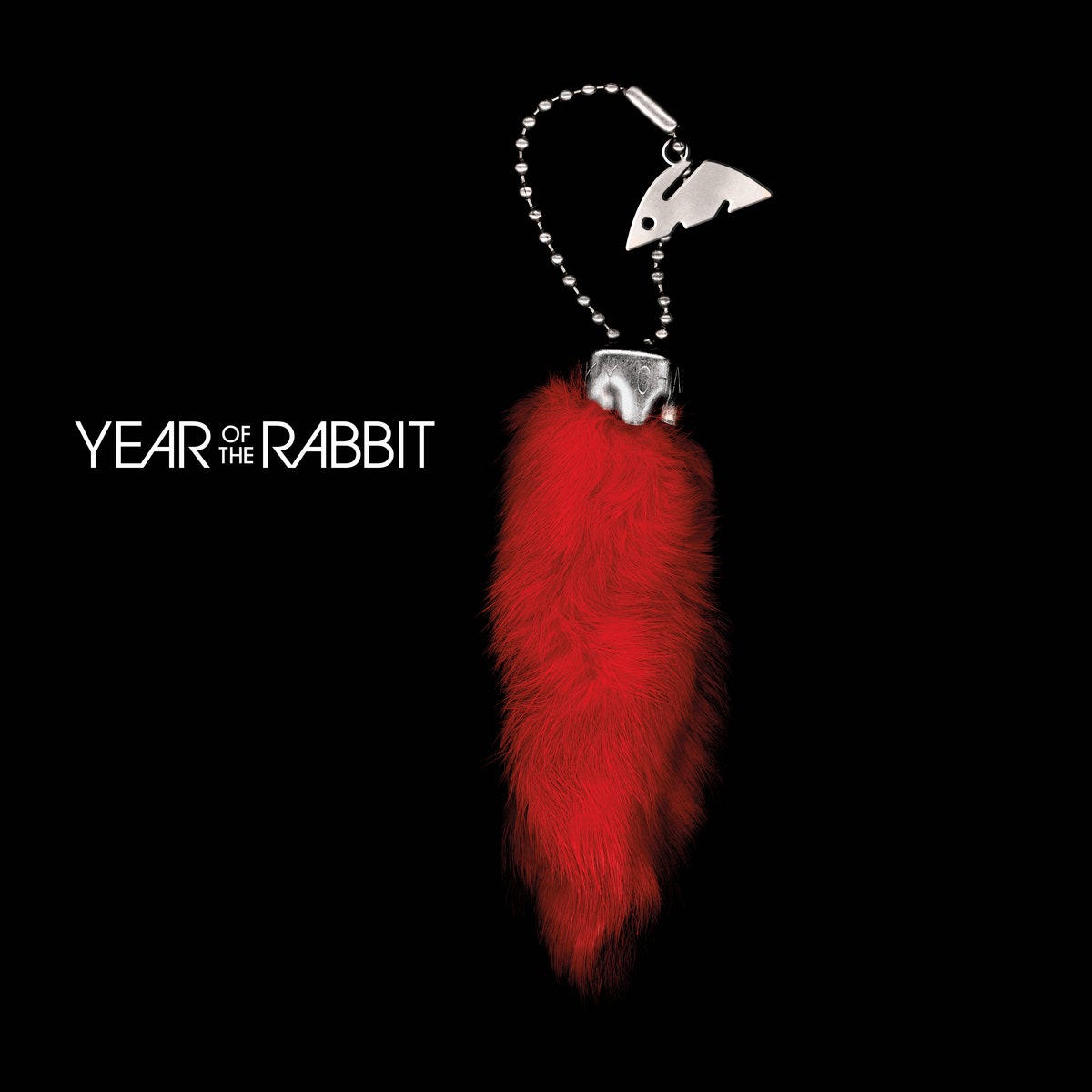Rising from the ashes of Failure and ON, Ken Andrews did what Ken Andrews does: he keeps the ball rolling. According to the internet, Year of the Rabbit was formed when Andrews partnered with ON’s drummer, Tim Dow (formerly of Shiner), who, in turn, reached out to Dow’s guitarist friend, Jeff Garber, of Castor. Rounding out the quartet is bass player Solomon Snyder, who joined shortly after Garber.
Thus, a hard-rocking band was formed, albeit one with a rather peculiar moniker. But in an era where a band named Hoobastank could have a hit, why not? At least you can pronounce Year of the Rabbit.
After forming, Year of the Rabbit self-released an EP in 2003 titled Hunted that grabbed the attention of the Elektra Records brass, and a full-length was ordered up. The self-titled record, released in July 2003, had a very short shelf life. This was one of those consolidation moments, and in February of 2004, Elektra’s parent company, Warner Music Group, was sold to a group of investors for $2.6 billion.
As is the way of these things, with that much money at stake, label mergers ensued. Elektra got folded into Atlantic Records, and a slew of bands got dropped as a result, including Year of the Rabbit. Arguably, seven months is hardly enough time to see if a band has legs or not, but the newly minted WMG wasted no time in wielding the axe.
So that’s the history of the band. But is this self-titled debut album any good? Well, not if you ask the crew over at Pitchfork:
“The band wastes no time showcasing their uninspired, formulaic, and oft-recycled sonic and lyrical propensities. The opener, ‘Rabbit Hole’, sets the tone for the record; radio-friendly power guitar with attitude and sturdy drumming molded into tight little rock songs with luminous production and machinelike craftsmanship. But, technical proficiency aside, it's little more than a desperate Foo Fighters song.”
That was one of the nicer things they said about Year of the Rabbit.
I’m not sure who peed in that reviewer’s Corn Flakes that morning, but here’s the thing: they got it wrong. Year of the Rabbit more than holds its own.
Now, I’m pretty unfamiliar with the bands that begat Year of the Rabbit, which I think works in my favor as I’m not attaching any baggage to the album. I was able to listen to YOTR with a clear mind and on its own terms.
Despite YOTR being a Ken Andrews production through and through (he wrote 9 of the 11 songs, as well as produced and mixed the album), the record comes across as if YOTR is its own entity, falling into the category where “the sum is greater than the parts.”
It’s weird to listen to the record 22 years after its release because you might be left wondering if it sounds of its era. And to that end, the answer is kind of. A song like “Absent Stars” does sound a little like early aughts Foo Fighters, or at least Foo-adjacent, but not nearly as insipid.
Even though the album lyrics lean heavily on the first person, there is a universality to the lyrics that don’t make the songs off-putting.
Ken Andrews has a lengthy production CV with everyone from Black Rebel Motorcycle Club to Chris Cornell to Pete Yorn, so it is no surprise that the sound of this album is impeccable. Sure, it’s a bit glossy, but that needn’t always be a detriment. If the music merits the sheen, then so be it. And in this case, songs like “Strange Eyes” reap the benefits.
Twenty-two years on, Year of the Rabbit may not have changed rock history, but the sole album in their catalog remains a taut, powerful record that deserves better than being a footnote.



